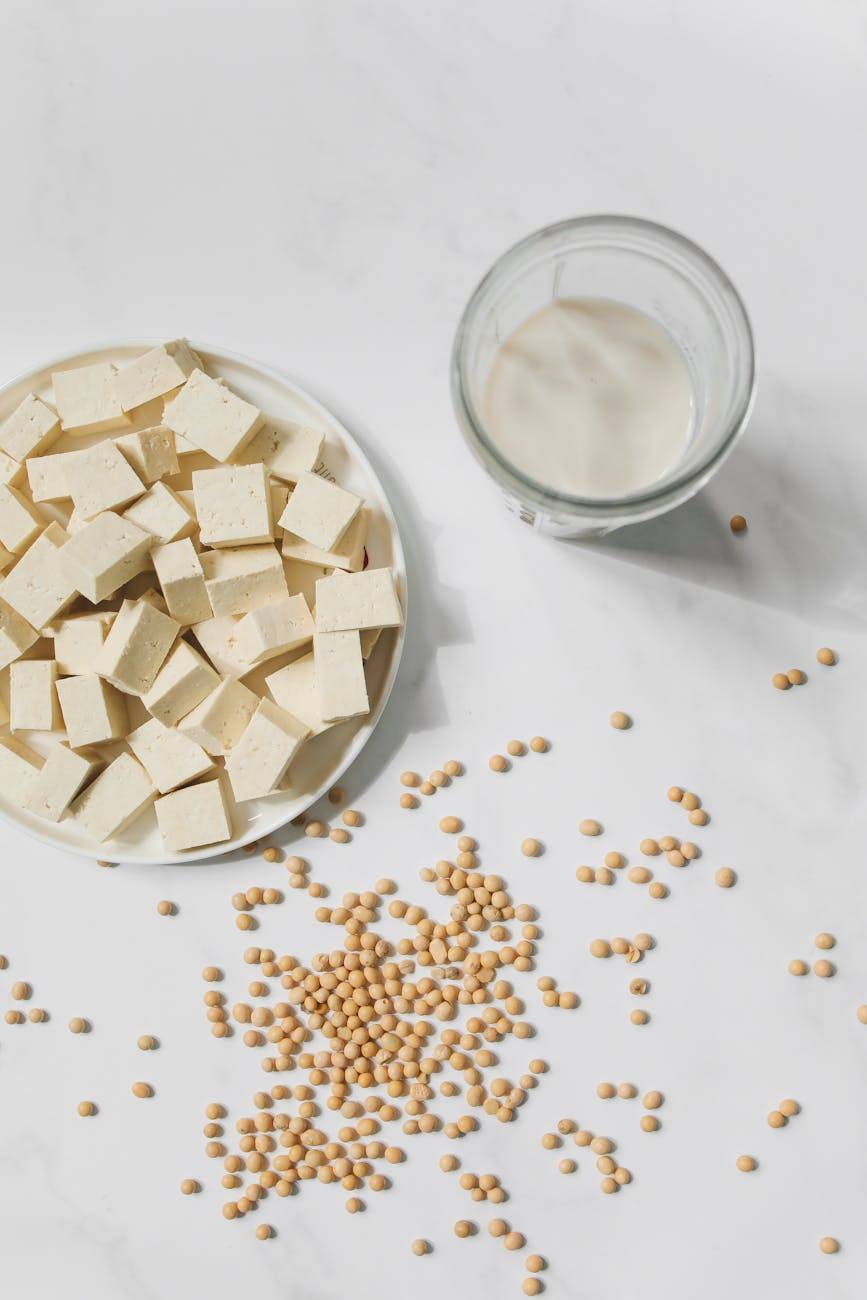Understanding Grass Fed Cheese
Grass fed cheese, including the highly sought-after grass fed cheddar cheese, has been gaining popularity among health-conscious individuals and cheese aficionados. This section delves into the nutritional benefits and components that contribute to the superiority of grass-fed dairy products over their conventionally-fed counterparts.
Nutritional Superiority of Grass Fed
The nutritional profile of grass fed cheddar cheese is notably superior to that of cheese from conventionally-fed cows. Studies indicate that grass fed cheese contains a higher concentration of essential fatty acids, lower levels of saturated fats, and increased amounts of vitamins and antioxidants. These health-promoting factors are attributed to the natural diet of cows that graze on grass, as opposed to those fed with grain-based feeds.
The Role of Omega-3 and CLA
One of the most significant nutritional advantages of grass fed cheese is its omega-3 fatty acid content. Omega-3s are recognized for their anti-inflammatory properties and are essential for cardiovascular health. Grass fed cheddar cheese has been found to have a higher content of omega-3 fatty acids and a more favorable omega-6 to omega-3 ratio compared to conventional cheese. This is coupled with higher levels of conjugated linoleic acid (CLA), a polyunsaturated fat thought to have various health benefits, such as reduced body fat and improved immune function (Source).
| Nutrient | Grass Fed Cheddar Cheese | Conventionally-Fed Cheddar Cheese |
|---|---|---|
| Omega-3 Fatty Acids | Higher | Lower |
| Omega-6 to Omega-3 Ratio | More favorable | Less favorable |
| Conjugated Linoleic Acid (CLA) | Higher | Lower |
Vitamins and Antioxidants Content
Grass fed cheddar cheese also surpasses conventional cheese in its vitamin and antioxidant content. It boasts higher levels of vitamin A and vitamin E, which are vital for maintaining good vision, a robust immune system, and healthy skin. Furthermore, the antioxidant properties found in grass fed cheddar help combat oxidative stress and may contribute to the prevention of chronic diseases.
| Nutrient | Grass Fed Cheddar Cheese | Conventionally-Fed Cheddar Cheese |
|---|---|---|
| Vitamin A | Higher | Lower |
| Vitamin E | Higher | Lower |
| Antioxidants | Higher | Lower |
The compelling nutritional benefits of grass fed cheese underscore its value in a healthy diet. By choosing grass fed cheddar, not only can one enjoy a delectable taste but also reap the rewards of a nutritionally superior product. For those interested in exploring a vast selection of these products, our comprehensive guides on where to buy raw cheese and raw cheese near me offer insights into sourcing the finest grass-fed dairy options.
The Taste of Tradition
Grass-fed cheddar cheese stands out not just for its nutritional benefits but also for the rich, traditional flavors it brings to the palate. With a variety of flavor profiles and distinctive characteristics in color and texture, grass-fed cheddar is a testament to the quality of cheese that has been enjoyed for generations.
Flavor Profile Differences
Grass-fed cheddar cheese is renowned for its richer and more complex flavor when compared to cheese derived from cows on a grain-based diet. This depth of flavor is attributed to the diverse diet of grass-fed cows, which graze on a natural pasture abundant in different types of grasses, herbs, and flowers. These elements contribute to the unique taste found in grass-fed cheddar cheese.
According to Mamavation, the flavor of grass-fed cheddar is often described as having a certain sharpness, coupled with earthy and nutty undertones. The complexity of these flavors is what sets grass-fed cheddar apart from conventional cheddar cheeses.
| Diet of Cows | Flavor Profile of Cheese |
|---|---|
| Grain-Based Diet | Milder, less complex |
| Grass-Fed Diet | Richer, more distinct |
Color and Texture Varieties
The color and texture of grass-fed cheddar cheese are also a direct reflection of the cows’ grass-fed diet. Grass-fed cheddar often exhibits a deeper color, which can range from a pale yellow to a vibrant golden hue, depending on the specific grasses and the season during which the cows are milked. This natural coloring is the result of the high levels of beta-carotene present in the grass, which cows convert into vitamin A.
Texture-wise, grass-fed cheese is typically creamier and more supple due to the higher fat content of grass-fed milk. This creamy texture not only feels luxurious on the tongue but also allows the cheese to melt beautifully, making it a superb choice for cooking and pairing with other foods.
| Diet of Cows | Color of Cheese | Texture of Cheese |
|---|---|---|
| Grain-Based Diet | Lighter Yellow | Less Creamy |
| Grass-Fed Diet | Deep Yellow to Golden | Creamier, More Supple |
For those interested in incorporating this traditional delicacy into their diet, there are various avenues to where to buy raw cheese and ensure an authentic experience. Grass-fed cheddar cheese is a testament to the time-honored methods of cheese-making, and a celebration of flavor that is deeply rooted in the quality of the milk from which it is made.
Health Benefits and Considerations
When it comes to dairy products, the nutritional profile can significantly impact one’s health. Grass fed cheddar cheese, in particular, has garnered attention for its potential health benefits. This section explores the specific advantages and considerations associated with consuming grass fed cheddar cheese.
Cardiovascular Health and Inflammation
Grass fed cheddar cheese is noted for its higher content of healthy fats, including omega-3 fatty acids and conjugated linoleic acid (CLA), compared to its conventionally produced counterparts. These components are linked to numerous health benefits, including improved heart health and reduced inflammation. Omega-3 fatty acids, for instance, are associated with lower blood pressure and decreased risk of heart disease. CLA has also been studied for its anti-inflammatory properties, making grass fed cheddar a smart choice for those monitoring their cardiovascular health (Mamavation).
| Nutrient | Benefit |
|---|---|
| Omega-3 Fatty Acids | Supports heart health, decreases inflammation |
| Conjugated Linoleic Acid | Anti-inflammatory, may reduce cardiovascular risk |
To learn more about the benefits of omega-3 and CLA in dairy, check out our detailed guide on grass fed cheese.
Bone Health and Vitamin K2
Another notable component in grass fed cheddar is vitamin K2, which plays a crucial role in bone health. This vitamin is essential for the proper utilization of calcium, aiding in the maintenance of strong and healthy bones. Grass fed dairy products, like raw milk cheddar cheese, are richer in this vitamin compared to grain-fed cheese, thanks to the diet of the cows grazing on grass (Mamavation).
| Vitamin/Mineral | Bone Health Benefit |
|---|---|
| Vitamin K2 | Assists in calcium absorption, maintains bone density |
For individuals interested in the bone-strengthening benefits of grass fed dairy, our selection of raw organic cheese provides a variety of options.
Weight Management and Fat Content
Grass fed cheddar cheese is not only lower in fat and calories but also contains higher levels of beneficial nutrients such as omega-3 fatty acids, CLA, and vitamin K2. These factors contribute to the overall nutritional quality of the cheese and can support weight management efforts. The presence of these nutrients, alongside the rich and complex flavor profile that comes from the cows’ diverse diet, makes grass fed cheddar an attractive option for health-conscious cheese lovers (A Greener World).
| Aspect | Grass Fed Cheddar Benefit |
|---|---|
| Lower Fat Content | Supports weight management |
| Higher Nutrient Levels | Promotes overall health |
To explore where to purchase high-quality grass fed cheddar, visit our directory of where to buy raw cheese near me.
The benefits of choosing grass fed cheddar cheese extend beyond taste to potentially significant health considerations. From supporting cardiovascular health to aiding in weight management, this cheese variant could be a valuable addition to a balanced diet. However, as with any food product, moderation and overall dietary context are key. For those interested in making an informed choice, our resources on where to get raw cheese can help locate the best grass fed options available.
Sourcing Authentic Grass Fed Cheese
Finding genuine grass fed cheddar cheese involves navigating through a marketplace where labels can sometimes be misleading. Understanding certifications, the importance of animal welfare, and how to identify reputable producers are key to acquiring the finest grass fed cheddar cheese.
Misleading Labels and Certifications
The term “grass-fed” on cheddar cheese labels is not regulated by the USDA as of 2016. Instead, the term is evaluated by four companies with a USDA Process Verified Program (PVP) or with a signed affidavit from the producer defining what “grass-fed” means in their specific operation (UGA Extension). This lack of regulation can lead to varying standards among producers, making it difficult for consumers to make informed choices.
To ensure that grass fed cheddar cheese meets certain standards, consumers should look for specific certifications such as “Certified Grassfed” or “Animal Welfare Approved” which indicate that the cheese comes from cows predominantly fed on grass (A Greener World).
Importance of Animal Welfare Practices
The welfare of animals is paramount in producing high-quality grass fed cheese. Grass fed cheddar cheese is often produced from cows raised on pasture, with access to fresh grass throughout the year. These cows are not given hormones or antibiotics, and their milk is free from pesticide residues, ensuring a more natural and sustainable production process (A Greener World).
By choosing cheese from producers who prioritize animal welfare, consumers not only support ethical farming practices but also encourage the production of cheese with a superior nutritional profile.
Identifying Reputable Producers
To source authentic grass fed cheddar cheese, it’s essential to identify producers who are transparent about their farming and production methods. Here are key factors to consider when selecting a producer:
- Certifications: Look for clear and trustworthy certifications on the packaging that indicate adherence to grass-fed and organic standards.
- Transparency: Reputable producers are usually willing to provide detailed information about their farming practices and the diet of their cows.
- Sustainability: Prioritize producers who engage in sustainable and regenerative farming practices, such as rotational grazing, which contributes to soil health and biodiversity (A Greener World).
- Local Sourcing: Whenever possible, source grass fed cheddar cheese near me from local farms or farmers’ markets, as this supports local economies and reduces the carbon footprint associated with transportation.
By being diligent in researching and selecting where to purchase grass fed cheddar cheese, consumers can enjoy the rich flavors while supporting ethical farming practices and the environment.
Cooking with Grass Fed Cheddar
Grass fed cheddar cheese offers a culinary experience that stands out due to its richer flavor profile and creamier texture. These characteristics make it a versatile ingredient in the kitchen, where it can be adapted to various recipes and paired with a wide range of foods.
Recipe Adaptations
When cooking with grass fed cheddar cheese, one can expect a more complex and pronounced flavor compared to conventional cheddar. This means that it can elevate the taste of traditional recipes that call for cheddar. For example, when preparing a classic macaroni and cheese, substituting with grass fed cheddar will enhance the dish with a deeper and more robust cheesy essence (Cheese House).
Here are some recipe ideas that benefit from the unique taste of grass fed cheddar:
- Macaroni and Cheese: Replace standard cheddar with grass fed cheddar for a richer taste.
- Grilled Cheese Sandwich: A simple sandwich turns gourmet with the addition of grass fed cheddar.
- Cheese Omelette: Incorporate grass fed cheddar for a breakfast with a more flavorful kick.
- Cheesy Biscuits: Add grated grass fed cheddar to the dough for a savory treat.
When adapting recipes, consider reducing the amount of added salt, as grass fed cheddar’s rich taste can compensate for less seasoning.
Pairing Suggestions
The flavor of grass fed cheddar, often described as richer and more complex (Mamavation), pairs well with a variety of foods and beverages. It complements both sweet and savory partners, making it a great addition to any cheese platter or meal.
Here are some pairing suggestions to bring out the best in your grass fed cheddar:
- Fruits: Apples, pears, and grapes balance the cheese’s richness with a touch of sweetness.
- Meats: Charcuterie like prosciutto or salami enhance the cheese’s complex flavors.
- Bread and Crackers: Rustic bread and artisanal crackers provide a crunchy contrast to the creamy cheese.
- Wine and Beer: Bold red wines or hoppy beers can stand up to the strong flavors of grass fed cheddar.
When creating pairings, consider the season and regionality of the ingredients to complement the cheese’s flavor, which can vary based on the cows’ diet and location (Savory Suitcase).
To explore more about grass fed cheddar and for additional insights on how to incorporate it into your diet, be sure to check out our extensive guides on where to buy raw cheese and discover the health benefits of raw organic cheese.
Supporting Sustainable Agriculture
As consumers become increasingly aware of the environmental impact of their food choices, the demand for sustainable products like grass fed cheddar cheese is on the rise. Grass-fed dairy farming not only offers nutritional and gastronomic benefits but also plays a critical role in supporting sustainable agriculture practices.
Environmental Impact of Grass Feeding
Grass feeding has a significantly positive impact on the environment. Rotational grazing—a practice often used in grass-fed dairy farming—contributes to soil health, reduces erosion, and supports biodiversity on farms. This method allows pastures to recover and maintain their health, leading to a more sustainable ecosystem. Moreover, grass-fed cows produce milk that is free from hormones, antibiotics, and pesticide residues, ensuring a more natural and sustainable production process. By choosing grass-fed cheese, consumers can contribute to a food system that prioritizes environmental stewardship and ethical practices.
Contribution to Biodiversity and Soil Health
The benefits of grass-feeding extend beyond just the cows. This practice plays a crucial role in enhancing biodiversity and soil health. Grass-fed farms often have a greater variety of plant species, which not only offers cows a rich and diverse diet but also supports a wide range of wildlife, including pollinators and beneficial insects. Healthy soil is a cornerstone of sustainable agriculture, as it can sequester carbon, store water, and provide a robust foundation for plants to grow. By supporting producers of organic grass-fed cheese, consumers are investing in agricultural methods that value and promote the health of the entire ecosystem.
In summary, opting for grass-fed cheddar is not just a choice for better health but also a step towards supporting sustainable agriculture practices. It’s a decision that helps protect the environment, enhances soil quality, and nurtures biodiversity, all while enjoying the rich and authentic flavors of traditionally made cheese. To find out where to purchase these products, explore options like where to buy raw cheese near me or where can I buy raw cheese to support local producers committed to sustainable farming.



